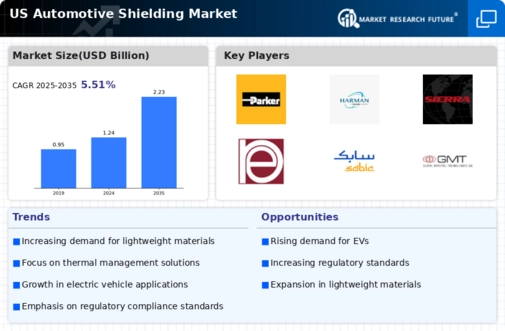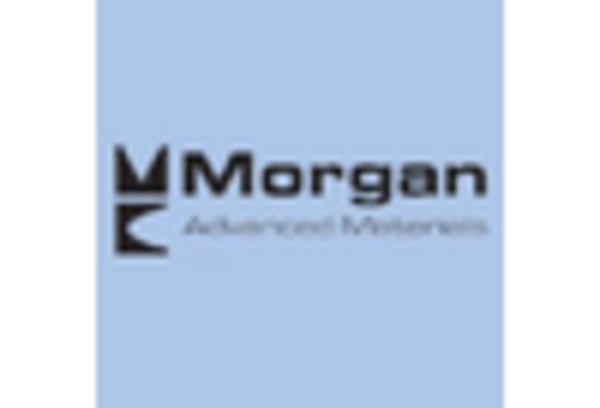Growing Electric Vehicle Adoption
The automotive shielding market is significantly influenced by the increasing adoption of electric vehicles (EVs) in the US. As EVs become more prevalent, the need for effective shielding solutions to manage electromagnetic interference and thermal management becomes critical. The market for electric vehicles is projected to grow at a CAGR of around 20% through 2025, which directly impacts the demand for automotive shielding products. This trend suggests that manufacturers will need to invest in advanced shielding technologies to ensure the safety and efficiency of EVs, thereby driving the automotive shielding market.
Increased Focus on Fuel Efficiency
The automotive shielding market is also driven by the industry's increasing focus on fuel efficiency. As manufacturers strive to produce lighter and more efficient vehicles, the demand for lightweight shielding materials is growing. This trend is particularly relevant in the context of regulatory pressures to reduce emissions and improve fuel economy. The automotive shielding market is projected to expand by around 12% as manufacturers seek innovative shielding solutions that contribute to overall vehicle efficiency. This focus on fuel efficiency is likely to shape the future of the automotive shielding market.
Rising Consumer Awareness of Vehicle Safety
Consumer awareness regarding vehicle safety is on the rise, which is positively impacting the automotive shielding market. As consumers become more informed about the potential risks associated with electromagnetic interference and thermal issues, they are increasingly demanding vehicles equipped with advanced shielding solutions. This heightened awareness is likely to lead to a market growth of approximately 10% in the coming years, as manufacturers respond to consumer preferences by integrating superior shielding technologies into their vehicles. Consequently, the automotive shielding market is expected to benefit from this shift in consumer behavior.
Expansion of Automotive Manufacturing in the US
The expansion of automotive manufacturing in the US is a key driver for the automotive shielding market. With several manufacturers increasing production capacities and establishing new facilities, the demand for shielding solutions is expected to rise correspondingly. This growth in manufacturing is anticipated to create a market environment where the automotive shielding market could see an increase of approximately 8% in the next few years. As production scales up, the need for effective shielding solutions to protect sensitive components will become more pronounced, thereby benefiting the automotive shielding market.
Technological Advancements in Automotive Shielding
The automotive shielding market is experiencing a surge due to rapid technological advancements in materials and manufacturing processes. Innovations such as advanced composites and nanomaterials are enhancing the performance of shielding solutions, making them more effective against electromagnetic interference (EMI) and thermal issues. The integration of these technologies is expected to drive market growth, with projections indicating a potential increase in market value by approximately 15% over the next five years. As vehicles become more technologically sophisticated, the demand for high-performance shielding solutions is likely to rise, further propelling the automotive shielding market.

















Leave a Comment